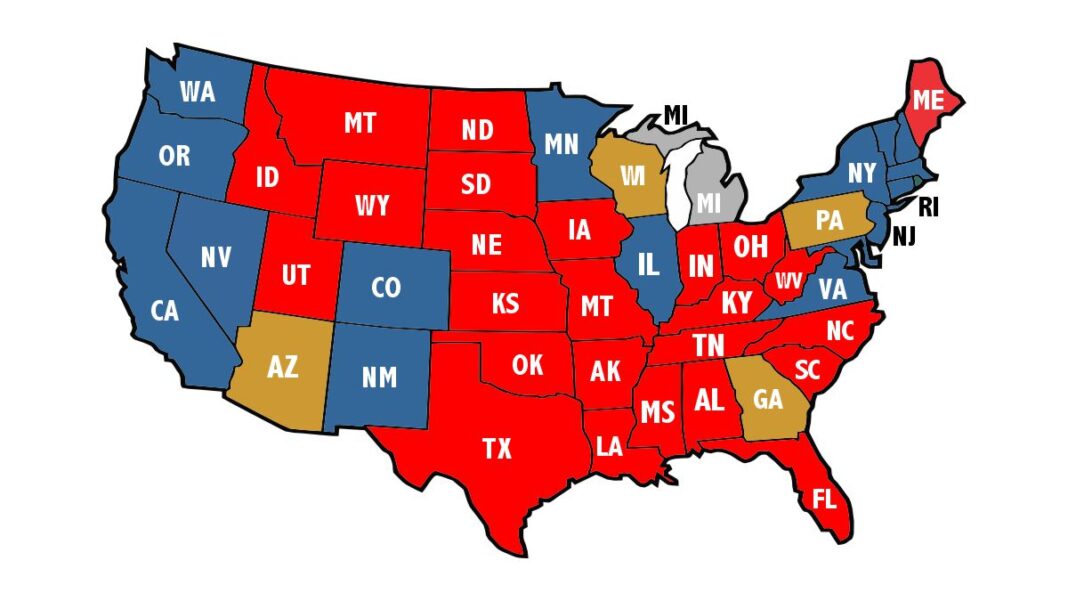
The 2024 election will be fought on a very different battlefield than the last one, with old reliably swing states no longer in play — and new ones taking center stage.
Why it matters: It’s revealing how fast swing states are changing — a vivid crystallization of America’s volatile politics.
What’s happening: Gone are the days of obsessing over Ohio and Florida. They’re growingly Republican.
- Gone are the days of Iowa and New Hampshire picking the nominees of both parties. South Carolina is now the place to watch for Dems.
- Gone are the days of Texas seeming more competitive thanks to its rising Hispanic population. It’s as red as ever.
Zoom in: Karl Rove notes in a Wall Street Journal column that Ohio Gov. Mike DeWine (R) was re-elected by 25 points and Florida Gov. Ron DeSantis won by 19 points — with the strongest GOP showing in Miami-Dade County in two decades.
- Both outcomes would have been unthinkable just two elections ago.
Between the lines: Iowa is now off the board for Dems in presidential races. Michigan, once a classic swing state, looks like it’s leaning blue.
- Colorado, eyed by political professionals as a top swing state of the future, now looks like a solid Dem stronghold.
The new battleground map that will determine who wins in 2024 includes two newcomers — Arizona and Georgia — and two traditional swing states — Pennsylvania and Wisconsin.
The 4 states to watch for 2024:
- Wisconsin was the only Biden state where Republicans won a Senate race this year. Rural Wisconsin is now Trump country. But the Milwaukee suburbs are looking more favorable for Democrats.
- Georgia was the closest battleground in the 2020 presidential race. Democrats can credit their narrow Senate majority to the unlikely Peach State pair of Raphael Warnock and Jon Ossoff.
- Pennsylvania: Democrats cracked the Keystone State code in this year’s midterms by making inroads in working-class areas where they had struggled. But if Republicans nominate stronger candidates in 2024, the GOP will be in contention again.
- Arizona: The biggest Sun Belt battleground features lots of ideological activists driving their parties to the left and right — and a critical mass of suburban Phoenix voters who make the difference in consistently close elections. Republicans have a natural advantage — but only if they nominate mainstream candidates.
By Mike Allen and Josh Kraushaar






